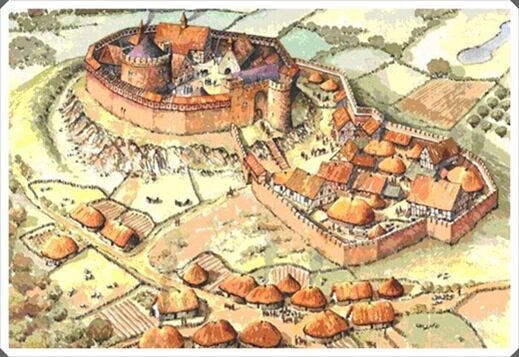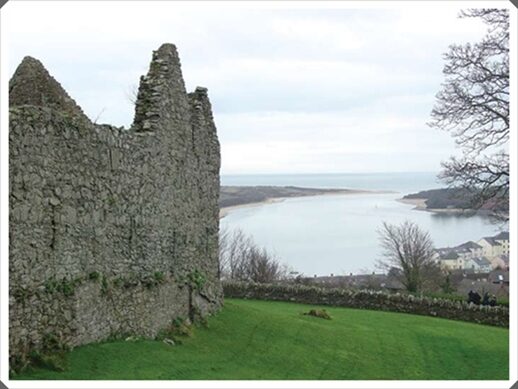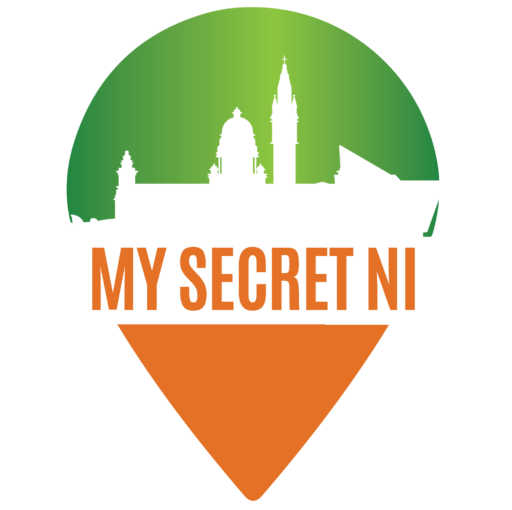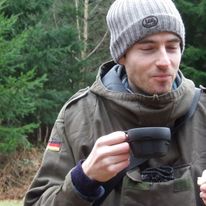Nestled in the picturesque countryside of Northern Ireland, Dundrum Castle stands tall as a magnificent historical landmark. A visit to this castle takes you back to the medieval era, where you can explore its fascinating history, architectural features, and breathtaking views. In this article, we will look in-depth at Dundrum Castle and what makes it an essential destination for any history buff or adventurer.
A Brief History of Dundrum Castle
Dundrum Castle is one of the most well-preserved castles in Northern Ireland and has a rich and complex history dating back to the early 13th century. Built by John De Courcy, an Anglo-Norman knight who conquered East Ulster, the castle was initially constructed as a stronghold for Norman power in Ireland.
The Founding of Dundrum Castle
In 1177, King Henry II of England granted the Irish province of Ulster to John De Courcy, who wasted no time establishing his reign over the land. To secure his power, he ordered the construction of four castles across County Down, with Dundrum Castle being the first.
The castle was built on a rocky outcrop, overlooking the strategic Dundrum Bay and the nearby Mourne Mountains. Its position gave De Courcy a commanding view of the surrounding countryside and made it a formidable stronghold, ensuring his control over the area.
The Anglo-Norman Influence
During the 12th and 13th centuries, Anglo-Norman knights established a powerful presence in Ireland, bringing a distinct military architecture. Dundrum Castle is a perfect example, boasting a simple yet robust design emphasising defence over comfort.
The castle has a keep, a curtain wall, and a gatehouse. The keep is a tall tower that served as a last line of defence in the event of an attack. The curtain wall surrounds the keep and provides additional protection, making it more challenging for attackers to breach the castle’s defences. The gatehouse is the castle’s main entrance, with a barbican guarding it.
The Castle’s Role in Irish History
Over the centuries, Dundrum Castle has played a vital role in Irish history. During the medieval period, it was the site of numerous battles and sieges, as various factions fought for control of the land.
The castle’s strategic location made it a vital stronghold for both the Norman and Gaelic forces, with the castle’s ownership changing hands multiple times during the 13th and 14th centuries.

Architectural Features of Dundrum Castle
Despite its simple design, Dundrum Castle boasts several impressive architectural features that showcase the skill and craftsmanship of its builders.
The Keep and Curtain Wall
The keep is the most prominent physical feature of Dundrum Castle. Standing over 20 meters high, it is a five-story tower that serves as both living quarters and a final line of defence against attackers. The tower boasts a spiral staircase that leads to a rooftop platform, providing a stunning view of the surrounding landscape.
The curtain wall surrounding the keep is a testament to the castle’s defensive capabilities. Its height and thickness made it difficult for invaders to breach the castle’s defences, while its crenels and merlons provided cover for defenders.
The Gatehouse and Barbican
The gatehouse is the primary entrance to Dundrum Castle. It is a large and sturdy structure designed to keep attackers at bay, with a portcullis and a heavy wooden door that could be bolted shut at a moment’s notice.
The barbican, located just outside the gatehouse, is another defensive feature of the castle. It is a small, fortified structure that provides additional protection to the castle entrance and serves as a checkpoint for anyone entering it.

The Great Hall and Living Quarters
The Great Hall is the largest room in the castle and was the heart of daily life in medieval times. It served as a dining hall, meeting room, and a place of entertainment. The hall features a large fireplace and several windows that offer natural light and ventilation.
The living quarters in the castle were rudimentary and offered little comfort. They consisted of small, cramped rooms with scant furniture and limited amenities.
The Surrounding Landscape and Views
Dundrum Castle is located in an area of Ireland renowned for its natural beauty, with stunning views of the surrounding countryside and coastline.
The Natural Beauty of Dundrum Bay
Dundrum castle dominates Dundrum Bay. Dundrum Bay is a vast body of water that borders the castle. It is a natural harbour and has been a site of trade and commerce for centuries. The bay is also a breeding ground for various species of wildlife, including seals and birds.
The Mourne Mountains and Beyond
The castle is situated at the foot of the dramatic Mourne Mountains, which form an impressive backdrop to the castle. These mountains are ideal for hiking and offer numerous trails to explore. On a clear day, it is possible to see as far as the Isle of Man from the castle.
The Castle’s Strategic Location
The strategic location of the castle made it an essential stronghold during medieval times. Its position on a rocky outcrop overlooking Dundrum Bay and the surrounding countryside gave its defenders a commanding view of the area and made it practically impregnable to attack.
Lord Grey captured it around 1539 and wrote of it to king Henry VIII: “I took another castell……called Dundrome, which I assure your lordship, as it standeth, is one of the strongest holds that I ever saw in Ireland”.
Visiting Dundrum Castle Today
Dundrum Castle is easily accessible. From Belfast take the A55 in a south-easterly direction and then A24 in the same direction towards Ballynahinch. The A24 leads onto the A2 coastal road at Clough. Dundrum village is about 3 miles beyond Clough. The direction to the castle is well signposted on the A2. There are parking and toilet facilities and the site is good for picnics, but respect the environment and keep the area clean.
Leave plenty of time for your visit, enjoy the beautiful surroundings and views, and visit some of the other important attractions in the area too.
How to Get There
Dundrum Castle is located on a wooded hill north west of dun drum Village the east coast of Northern Ireland, approximately 8 miles southwest of the town of Downpatrick. Public transport options are limited, so it is best to rent a car to get to the castle.
Exploring the Castle Grounds
Visitors can explore the castle grounds and the surrounding area at their leisure. The castle grounds offer spectacular views of the surrounding landscape and a glimpse into the castle’s medieval past.
There are also several other historic landmarks in the area, such as the nearby Inch Abbey, which is a ruined monastery dating back to the 12th century.
Nearby Attractions and Activities
The area surrounding Dundrum Castle is a haven for outdoor enthusiasts, with numerous opportunities for hiking, cycling, and fishing. Additionally, there are several scenic golf courses in the area that offer stunning views of the coastline.
For history buffs, the nearby town of Downpatrick is home to the St Patrick Centre, which offers an in-depth look at the life and legacy of the patron saint of Ireland.
In Conclusion
Dundrum Castle is a fascinating landmark that provides a glimpse into the medieval history of Ireland. Its impressive architectural features and strategic location make it a must-visit destination for anyone interested in history or seeking adventure in the great outdoors. A visit to Dundrum Castle will transport you back in time to an era of knights, battles, and castles, leaving you with unforgettable memories of this remarkable landmark.

